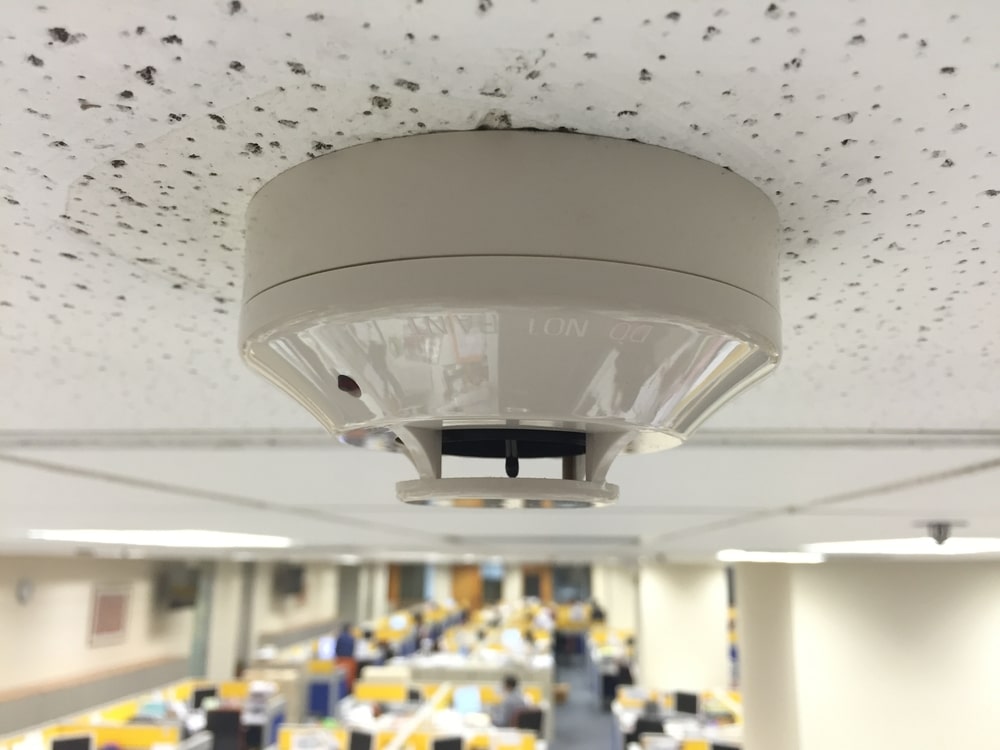Discover the Advantages of Installing a Wireless Smoke Detector
A working smoke detector is absolutely essential for fire safety. There are two types of smoke detectors used in commercial and residential applications: wired and wireless. The coverage of wired fire detection systems had been limited to new constructions because of the difficulty in laying cables during construction. However, with present technologies increasing rapidly, we have begun to see wireless fire alarm systems as well.
They allow for information to be transmitted over radio frequencies. Many homeowners today are interested in avoiding the labour, expense and inconvenience of installing wires to create wired fire alarms. A wireless smoke detector can detect smoke in locations where it would be practically impossible or prohibitively expensive to run wires. Choosing to install one in your home could greatly reduce your chances of being stuck in a house fire.

What is a Wireless Smoke Detector?
A wireless smoke detector is a device that is used to detect smoke in a house or a building. They are installed in areas where fires, accidents or any other incidents may occur. The devices can be connected directly to the fire department so that they can be contacted in case of an emergency.
The easy to install wifi connected fire alarm is convenient because it doesn’t require any wires, and it works using radio frequencies to transmit the signals to the receiver. This type of devices is very useful for people who want to avoid drilling holes into their walls, as well as for people who don’t have access to electric wires.
These smoke detectors have a high degree of sensitivity, which makes them capable of detecting even small particles of smoke, therefore they can be very useful in homes with smokers. The use of these devices can help you save money and precious time if there is ever a fire accident in your home or office building.
They’re also known by other names such as ionization smoke alarms, photoelectric smoke alarms, dual technology alarms and so on. The most common type of wifi connected fire alarm is the ionization detector, which works by detecting flames and sparks.
It uses radioactive isotopes like americium-241 or beryllium-7 and generates small quantities of ionizing radiation that travel through the air. This radiation reacts with air molecules, creating charged particles that produce an electrical current when they strike a metal plate inside the detector. When this happens, it sets off an alarm in your home or office premises.

Send Alerts to Your Phone
A wifi smoke detector can be a huge help for individuals who have hearing difficulties or are hard of hearing. It’s also very convenient for individuals who live alone or have difficulty getting up and downstairs. Many people who are hard of hearing need the alert to be delivered in a manner that they can hear, such as sending an alert via text message to their cell phone.
The other big advantage is that it allows you to receive alerts in situations where you might not otherwise be able to hear them normally. For example, if you’re sleeping or are in another part of the house, and there is an emergency situation, you can get the alert sent directly to your cell phone and be able to respond accordingly.
One of the greatest advantages of wireless smoke alarms is that they can be linked with other smart devices such as thermostats, lights and locks. For instance, if a fire breaks out in your house, you can use a smartphone, or any other mobile device, to simply turn off the power supply or unlock doors that may prevent people from escaping to safety. Or you can also remotely control lights outside and inside to enhance visibility, and therefore also safety.
WiFi Enabled System is Up to Date with Local Fire Codes
One of the primary benefits of installing a wifi connected fire alarm is that it’s up to date with all local fire codes, so if a fire takes place, you’re covered. In addition, these devices allow for remote monitoring through an internet-based service. Many times, this makes for faster response time by emergency personnel if a fire does take place. It also means that you can check on the status of your smoke detector from wherever you are through the internet.
Having a Backup Battery Reduces Your Risk of Fire Damage
The thing that makes a wireless smoke detector different from a standard one is that it has no power cord. It will run on a backup battery, or rechargeable batteries, so that even if there is no electrical outlet nearby you will still be able to use it when you need it.

People often forget to change the batteries in their smoke detectors, which can cause them to stop working. Having a backup battery will reduce the risk of the detector failing when you need it most. This could be useful in case of a fire or an explosion. If the fire was big enough to knock out the normal power supply, the backup battery would kick in and keep the alarm working for hours.
Easier to Install than Wired Smoke Alarms
Another significant advantage of wireless smoke detectors is that they’re easier to install than the wired designs. Since there is no need for a physical connection between the detection device and the control panel, the need for drilling holes in walls and ceilings to run wires is also eliminated. This also makes it easy to install them in different locations throughout your home, as well as being easy to remove if you move or decide to change the placement of your detectors.
To Sum Up
Wireless systems eliminate the hassle of running wires to each detector. If your house has a circuit breaker, you can install as many detectors as you like—no matter where they are. Most smoke alarm systems come with a seven-year sealed battery backup, but if you want to monitor the battery status, or change the battery yourself (without a ladder or climbing on the roof), then it’s a good idea to go for wireless.